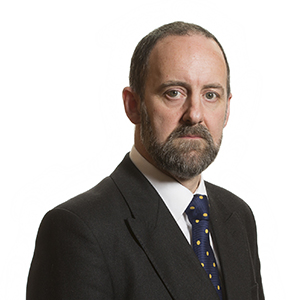
Crown House Technologies Ltd v Cardiff Commissioning Ltd and another [2018] EWHC 54 (TCC)
This judgment relates to an application by the second defendant (ENP) for summary judgment on its defence. The claimant (CHT) resisted the application. ENP supplied CHT with 8 air-conditioning units, which CHT then installed, as main contractor. CHT sub-contracted part of the installation works, the balancing and commissioning of the air-conditioning systems, to the first defendant (CCL). CCL themselves sub-contracted such works to another company (ESL), also a defendant in respect of a claim made by CHT.
The commissioning of the units began in December 2008 but was delayed. During the cold weather in December/January 2009, the units began to leak as a result of the freezing of residual water in the units, which had caused the coils to distort and crack. This meant that the water had not been fully drained from the units, as required.
CHT's main claim was against CCL and/or ESL, as the sub-contractors for the commissioning works, for failing to fully drain the units during the winter of 2008-2009. However, CHT also pursued ENP on the basis of three particular breaches, one of which was an allegation that the user manual supplied by ENP with the units was in some way deficient or unclear.
Applying for summary judgment
The summary judgment procedure allows a party (claimant or defendant) to proceedings to seek to have its case determined in its favour at an early stage, where that party considers that the other side has no real prospect of succeeding at trial or where there is no other compelling reason to go to trial, either due to a point of law or due to the evidence (or lack of it) provided.
In this case, ENP, as the second defendant, sought to have the case brought against it by CHT summarily decided, on the basis that CHT's case against ENP could not be sustained at trial. ENP succeeded.
Who needs evidence?
In its case against CCL and ESL, CHT had argued that the user manual supplied by ENP was clear and devoid of ambiguity, and that, accordingly, CCL and ESL should have understood the mechanisms by which full drainage of the units could be achieved.
Coulson J also considered the contents of the user manual and found that "the requirement to drain down the Chiller Units using both sets of valves would have been apparent to anyone reading the User Manual."
So what was CHT's alternative case against ENP?
CHT argued that the manual was potentially misleading in that there were two places within the manual where information was provided on the units' valves, which would be used to drain the air-conditioning units.
However, crucially, CHT had no evidence to support this allegation. Coulson J noted that "Whilst, in a proper case, it is open to a claimant to plead its claims in the alternative, the basis of the alternative case here is impossible to discern" and "The absence of a proper basis for this alternative case is confirmed by the absence of any evidence to the support the allegation."
CHT had no factual witnesses to put forward to support its alternative case that the manual was unclear. This was because CHT's witnesses could not say that the manual was actually unclear on the basis that CHT's primary case against CCL and ESL was founded on the basis that the manual was perfectly clear. Further, neither CCL nor ESL were intending to argue, in defence of CHT's claim at trial, that the manual had been unclear, as each had in fact robustly argued that the manual was not provided to them by CHT.
The best CHT was able to offer was that evidence as to the clarity of the manual may be adduced by way of cross-examination of the CCL and ESL witnesses on the issue of whether those organisations did in fact have the manual. But as Coulson J noted, "that is an entirely separate point and cannot realistically be part of those witnesses' evidence."
Fanciful allegations
Coulson J decided that CHT, in relation to its case against ENP, was "a perfect example of a claimant who never had a proper basis for the plea in question, who is now waiting for something to turn up…"
The alternative case put forward by CHT against ENP was evidence of a scattergun approach by CHT in its attempts to get someone on the hook for the failing units. Coulson J stated that "The alternative allegation about the Manual [was] contrary to CHT's case and not only unsupported but contradicted by every other party."
Accordingly, Coulson J concluded that the allegation detailed above, as well as the other two breaches alleged, were fanciful and had no realistic prospect of success at trial.
Comment
Whilst this case does not break any new ground in relation to applications for summary judgment, it does serve as a timely reminder to claimants to avoid a scattergun approach, capturing all possible defendants, when commencing proceedings, without a proper analysis of the merits of the case against each potential defendant. A claimant has to have a "real, as opposed to a fanciful, chance of winning" (Swain v Hillman) when defending a summary judgment application and care must be taken to ensure that the evidence in relation to the primary case does not entirely contradict the basis of any secondary case.
The claim against ENP ultimately relied on purely hypothetical factual witness evidence (that CCL or ESL may argue, in the alternative to the primary argument that the manual had not been received by either party, that the manual was unclear or ambiguous), leading Coulson J to decide that: "the time has come for the claim against ENP to be put out of its misery."
A further relevant factor in this case was CHT's late service of witness evidence in response to ENP's application and in fact Coulson J was critical of CHT's conduct generally. Coulson J considered that "There was no good reason for the delay, which appeared to be based on the old-school approach of leaving everything until the last minute and then failing to achieve even that."
If CHT had used late service of the evidence as a tactic to gain an advantage in the application, it had little practical effect on the case, which was resoundingly decided in ENP's favour on the merits. In any event, using such a strategy is a risky business and should be avoided.







